
The Royal Canadian Mounted Police, commonly known in English-speaking areas as the Mounties, is the federal and national police service of Canada. As police services are the constitutional responsibility of provinces and territories, the RCMP's primary responsibility is the enforcement of federal criminal law, and sworn members of the RCMP have jurisdiction as a peace officer in all provinces and territories of Canada. However, the force also provides police services under contract to eight of Canada's provinces, all three of Canada's territories, more than 150 municipalities, and 600 Indigenous communities. In addition to enforcing federal legislation and delivering local police services under contract, the RCMP is responsible for border integrity; overseeing Canadian peacekeeping missions involving police; managing the Canadian Firearms Program, which licenses and registers firearms and their owners; and the Canadian Police College, which provides police training to Canadian and international police forces. The force has faced criticism for its broad mandate, and since the early 2020s, several governments, politicians, and scholars have recommended terminating the RCMP's contract policing program. Public Safety Minister Marco Mendicino was mandated to conduct a review of RCMP contract policing when he took office in 2022.

Parliament Hill, colloquially known as The Hill, is an area of Crown land on the southern banks of the Ottawa River in downtown Ottawa, Ontario, Canada. Its Gothic revival suite of buildings, and their architectural elements of national symbolic importance, is the home of the Parliament of Canada. Parliament Hill attracts approximately three million visitors each year. Law enforcement on Parliament Hill and in the parliamentary precinct is the responsibility of the Parliamentary Protective Service (PPS).

The Office of the Prime Minister and Privy Council building, formerly known as the Langevin Block, is an office building facing Parliament Hill in Ottawa, Ontario, Canada. As the home of the Privy Council Office and Office of the Prime Minister, it is the working headquarters of the executive branch of the Canadian government.
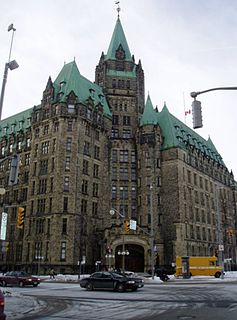
The Confederation Building is a office building in Ottawa, Ontario, Canada. Located just west of the Parliament Buildings at Bank Street and Wellington Street, it is generally considered part of Parliament Hill.
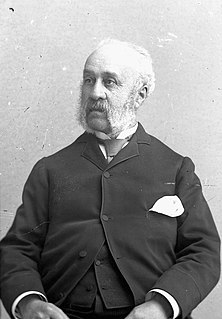
Thomas Fuller was an English-born Canadian architect. From 1881 to 1896, he was Chief Dominion Architect for the Government of Canada, during which time he played a role in the design and construction of every major federal building.
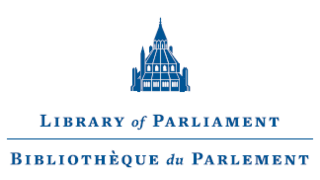
The Library of Parliament is the main information repository and research resource for the Parliament of Canada. The main branch of the library sits at the rear of the Centre Block on Parliament Hill in Ottawa, Ontario. The library survived the 1916 fire that destroyed Centre Block. The library has been augmented and renovated several times since its construction in 1876, the last between 2002 and 2006, though the form and decor remain essentially authentic. The building today serves as a Canadian icon, and appears on the obverse of the Canadian ten-dollar bill.

The Justice Annex was a building just east of the Supreme Court of Canada and west of Parliament Hill in Ottawa, Ontario, Canada. Built in 1942–3, it was the last surviving representative of many similar temporary buildings erected during the Second World War to house the rapidly growing number of government employees. This building was built to house Royal Canadian Mounted Police (RCMP) officers. It later became the headquarters of C.D. Howe's Department of Munitions and Supply. After the war it was given to the Justice Department and named the Justice Annex.
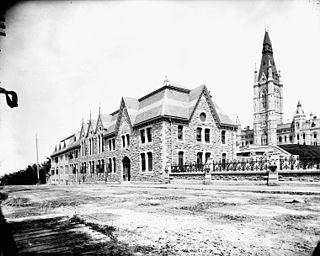
The Second Supreme Court of Canada building sat to the west of Parliament Hill in Ottawa and was home to the Supreme Court of Canada from 1882 to 1945.

Green College is a centre for interdisciplinary scholarship and a community of scholars at the University of British Columbia founded by Cecil Howard Green and Ida Green.

The Dominion Public Building is a five-storey Beaux-Arts neoclassical office building built between 1926 and 1935 for the government of Canada at southeast corner of Front and Bay streets in Toronto, Ontario, Canada.
Thomas William Fuller, the son of Thomas Fuller, was a Canadian architect. Before his selection as Dominion Architect, Fuller designed a number of federal buildings in Dawson City, Yukon, some of which are now designated as National Historic Sites of Canada. These include the Post Office (1899); Court House (1900–01); Territorial Administration Building, 5th Avenue (1901); Public School (1901) which burned 1957; and Commissioner's Residence (1901).

The Central Experimental Farm (CEF), commonly known as the Experimental Farm, is an agricultural facility, working farm, and research centre of the Science and Technology Branch, formerly the Research Branch, of Agriculture and Agri-Food Canada. As the name indicates, this farm is centrally located in and now surrounded by the City of Ottawa, Ontario, Canada. The 4 square kilometres (1.5 sq mi) farm is a National Historic Site of Canada and most buildings are protected and preserved as heritage buildings.
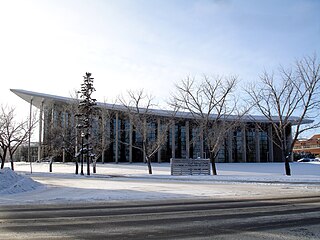
The RCMP Heritage Centre is a law enforcement museum located in Regina, Saskatchewan, Canada. The museum houses a number of exhibits on the Royal Canadian Mounted Police (RCMP) and artifacts relating to the police force. The heritage centre's 6,000-square-metre-building (65,000 sq ft) was designed by Nick Milkovich Architects, and is situated in the northeast end of RCMP Academy, Depot Division.
Chilion Jones was the business partner of architect Thomas Fuller in nineteenth-century Canada.

Sinclair Centre is an upscale shopping mall in Downtown Vancouver, British Columbia. It is located at 757 West Hastings Street between Granville and Howe streets. The centre comprises four buildings that were restored and connected by a new atrium space designed by Henriquez Partners Architects and Toby Russell Buckwell Architects in 1986. The cost for this work was 38 million. The main post office was housed here from 1910 until the new one opened in 1958. The Post Office Building is in an Edwardian Baroque style, combining English and French influences. It features an atrium clock consisting of four 12-foot-diameter (3.7 m) clocks built in 1909 and is the largest clock movement in Western Canada; the minute hands alone weigh 92 kilograms each. In addition to the mall, the building has a seven floor office tower occupied by the federal government. The buildings that comprise the centre are the Post Office, the handsome and architecturally esteemed Winch Building, the Customs Examining Warehouse, and the Federal Building. The mall is home to elite boutiques. The complex was renovated in 1986 and announced on November 13, 1983 that it was to be renamed after James Sinclair, member of Parliament for Vancouver North and later Coast—Capilano as well as Minister of Fisheries. Sinclair is the maternal grandfather of 23rd Canadian Prime Minister Justin Trudeau.SkyTrain Waterfront Station

Beechwood Cemetery, located in the former city of Vanier in Ottawa, Ontario, is the National Cemetery of Canada. It is the final resting place for over 82,000 Canadians from all walks of life, such as important politicians like Governor General Ramon Hnatyshyn and Prime Minister Sir Robert Borden, Canadian Forces Veterans, War Dead, members of the Royal Canadian Mounted Police, and men and women who have made a mark on Canadian history. In addition to being Canada's National Cemetery, it is also the National Military Cemetery of Canada and the Royal Canadian Mounted Police National Memorial Cemetery. A woodland cemetery founded in 1873, it is 64.7 hectares and is the largest cemetery in the city of Ottawa.
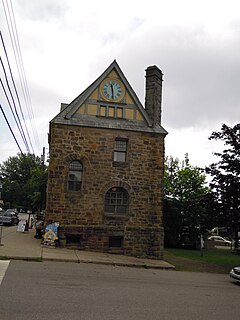
Gilbert H. Grosvenor Hall is a historic building in Baddeck, Nova Scotia, Canada. The 19th-century building has served as a post office, library, and interpretive centre.

The 2014 shootings at Parliament Hill were a series of shootings that occurred on October 22, 2014, at Parliament Hill in Ottawa. At the Canadian National War Memorial, Corporal Nathan Cirillo, a Canadian soldier and reservist on ceremonial sentry duty, was fatally shot by Islamic terrorist Michael Zehaf-Bibeau. Zehaf-Bibeau then entered the nearby Centre Block parliament building, where members of the Parliament of Canada were attending caucuses. After wrestling with a constable at the entrance, Zehaf-Bibeau ran inside and had a shootout with RCMP officers. He was shot 31 times by six officers and died on scene. Following the shootings, the downtown core of Ottawa was placed on lockdown and majority of schools in Ottawa were on lockdown while police searched for any potential additional threats.

Coquitlam City Hall is the home of Coquitlam City Council in Coquitlam, British Columbia, Canada. It is located at the intersection of Pinetree Way and Guildford Way in the Town Centre neighbourhood.
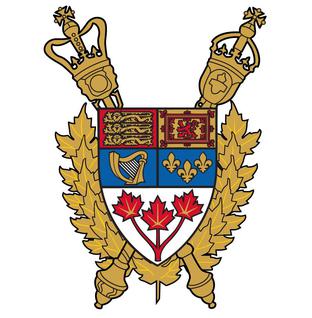
The Parliamentary Protective Service is the office of the Parliament of Canada which provides physical security within the Parliamentary Precinct in Ottawa, Ontario.




















